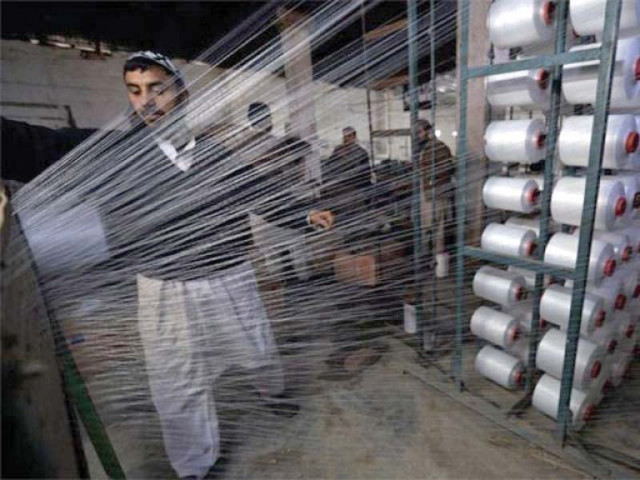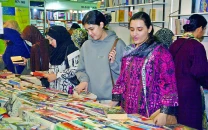‘80% textile workers do not use safety precautions’
Panellists discuss health and safety measures in country’s garment sector

Experts suggest use of personal protective equipment and occupational health and safety training for managers and workers to improve knowledge and practices. PHOTO: FILE
Textile company steps up exports in difficult times
The textile mill employees are exposed to cotton dust leading to respiratory diseases such as byssinosis and complaints of chest tightness, shortness of breath and persistent coughing, said AKU community health sciences department assistant professor Asaad Nafees.
“About one in every 10 textile workers developed byssinosis, two in 10 suffered from shortness of breath and three in 10 complained of chest tightness,” he shared.
The MultiTex research project, carried out by AKU’s community health sciences department, found that employees most at risk of chest ailments were the least aware of health hazards, said Dr Natasha Shaukat, adding that while interviewing 300 employees at seven textile mills in Karachi - with a workforce of approximately 9,000 people - it was found that almost 90% of them are uneducated and had little awareness of the health risks of cotton dust.

The ratio is the worst among those working longer shifts and more days per week, she said, adding that more than 80% of the workers did not use safety precautions that will help protect them against hazards at the workplace.
The research suggested the use of personal protective equipment, such as facemasks to reduce inhalation of harmful particles and occupational health and safety (OHS) training for managers and workers to improve knowledge, attitude and practices. It further suggested organisational changes to minimise the number of workers in danger zones and to reduce the time spent by workers in high exposure settings and structural changes that involved the purchase of new machinery and improved workplace design and ventilation.
Innovation will help boost textile sector
“The research findings shared today will help build a case for textile industry stakeholders to improve health and safety since it will benefit both workers and the financial performance of companies,” said Olaf Petermann from The German Social Accident Insurance Institution for the energy, textile, electrical and media products sectors.
There are 15 million workers in the textile and garment industry and the sector provides 40% of Pakistan’s workforce, said SAA Centre for the Improvement of Working Conditions and Environment, health and safety officer Muhammad Mujahid
According to their study, OHS practices protect employees against workplace accidents and illness and ensure the employees’ social protection. Companies also profit in a formal and informal way, said Mujahid.
It’s vital to educate workers and conduct their training, said Pakistan Institute of Labour Education and Research joint director Zulfiqar Shah, blaming the labour department for not being serious in this regard since the past many years.
The Sindh labour department has been facing challenges, however, we are fully committed to improve the OHS standards in the industry,” said the department’s joint director for health and safety, Ali Ashraf Naqvi.
Published in The Express Tribune, October 5th, 2016.



















COMMENTS
Comments are moderated and generally will be posted if they are on-topic and not abusive.
For more information, please see our Comments FAQ